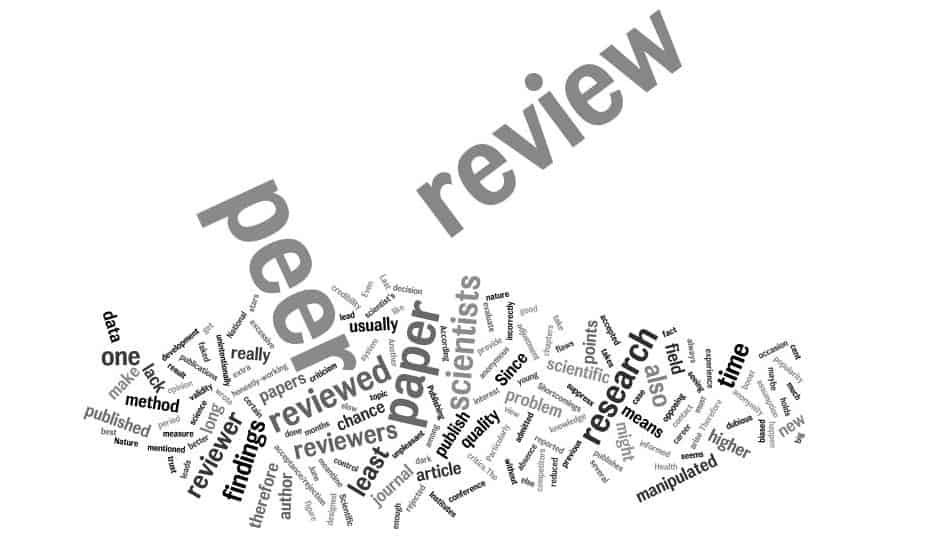Introduction
Peer review is a fundamental component of academic publishing, ensuring the credibility, quality, and validity of scholarly research. It acts as a filter that helps maintain the integrity of academic literature by subjecting research manuscripts to scrutiny before publication. However, peer review is not a one-size-fits-all process. Different journals and disciplines employ various types of peer review, each with distinct advantages and challenges.
This article explores the main types of peer review, their characteristics, benefits, limitations, and best practices for authors navigating the review process.
1. What is Peer Review?
Peer review is the process by which academic research is evaluated by experts in the field before being published in a scholarly journal. The primary objectives of peer review include:
- Ensuring the accuracy, originality, and significance of research.
- Providing constructive feedback to improve the manuscript.
- Upholding ethical and methodological standards.
There are several types of peer review, each varying in the level of anonymity between authors and reviewers, transparency, and editorial control.
2. Types of Peer Review
2.1. Single-Blind Peer Review
How It Works
In a single-blind peer review, the reviewers know the identity of the authors, but the authors do not know the identity of the reviewers.
Advantages
- Reviewers can provide honest and unbiased critiques without fear of retribution.
- Helps maintain the integrity of the review process.
- Authors are not influenced by the reputations of the reviewers.
Challenges
- Reviewers may be biased against or in favor of well-known authors or institutions.
- Power imbalances may exist, particularly if junior researchers receive feedback from senior academics without knowing their identities.
Where It Is Used
Single-blind peer review is one of the most common review types, used in many disciplines, particularly in science, technology, and medicine.
2.2. Double-Blind Peer Review
How It Works
In double-blind peer review, both the authors and the reviewers remain anonymous to each other.
Advantages
- Minimizes bias related to author reputation, gender, institutional affiliation, or geographical location.
- Creates a more objective evaluation process.
- Encourages reviewers to assess the work based solely on its merits.
Challenges
- Maintaining anonymity can be difficult, especially in specialized fields where research topics and writing styles may reveal the author’s identity.
- Some journals struggle to enforce strict blinding policies effectively.
Where It Is Used
Many high-impact journals in various fields, including social sciences and humanities, use double-blind peer review to ensure fairness.
2.3. Open Peer Review
How It Works
In open peer review, the identities of both the reviewers and the authors are disclosed. Some variations include publishing reviewer comments alongside the final article.
Advantages
- Enhances transparency and accountability in the review process.
- Encourages constructive feedback since reviews are publicly available.
- Allows reviewers to receive recognition for their contributions.
Challenges
- Reviewers may hesitate to provide critical feedback due to fear of professional repercussions.
- Potential conflicts of interest may arise if reviewers and authors are acquainted.
Where It Is Used
Open peer review is gaining popularity, especially in fields like medicine, physics, and multidisciplinary research. Some open-access journals, such as those in the PLOS family, employ this model.
2.4. Transparent Peer Review
How It Works
Similar to open peer review, but with a slight variation—while the identities of the reviewers may remain anonymous, their comments and decision letters are published alongside the final article.
Advantages
- Adds credibility to the review process by making evaluations publicly accessible.
- Promotes transparency and scholarly dialogue.
Challenges
- Reviewers may be reluctant to provide strong critiques if their comments will be publicly available.
- Not all journals have adopted this model, limiting its reach.
Where It Is Used
Journals like Nature Communications and BMJ Open use transparent peer review models.
2.5. Collaborative Peer Review
How It Works
In collaborative peer review, reviewers engage in direct discussions with authors to refine and improve the manuscript before a final decision is made.
Advantages
- Facilitates constructive dialogue between authors and reviewers.
- Encourages a developmental approach to improving the manuscript.
- Reduces misinterpretation of reviewer comments.
Challenges
- Time-consuming compared to traditional peer review methods.
- Requires additional effort from both authors and reviewers.
Where It Is Used
Some medical and scientific journals, as well as preprint servers like eLife, use collaborative peer review models.
2.6. Post-Publication Peer Review
How It Works
In post-publication peer review, articles are published first and then subjected to public or invited peer review afterward.
Advantages
- Speeds up the dissemination of research findings.
- Allows broader scholarly engagement and critique beyond selected reviewers.
- Enables the correction of errors after publication.
Challenges
- Risk of misinformation if flawed research is published before thorough review.
- Lack of formalized review processes in some cases.
Where It Is Used
Platforms like PubPeer and F1000Research support post-publication peer review.
3. Choosing the Right Peer Review Model
The choice of peer review type depends on several factors:
- Journal policies – Authors should check submission guidelines to understand the review process.
- Field of study – Some disciplines favor specific models due to ethical or methodological concerns.
- Transparency preferences – Open and transparent peer review models are beneficial for researchers seeking visibility.
- Timeliness – Post-publication and open reviews can accelerate knowledge dissemination.
4. Best Practices for Authors Navigating Peer Review
- Understand the Journal’s Review Model – Read submission guidelines to know what type of review to expect.
- Address Reviewer Feedback Constructively – Even if critical, use feedback to strengthen your manuscript.
- Maintain Professionalism – Respond politely and factually to reviewers’ comments.
- Ensure Anonymity When Required – In double-blind review, remove identifying details from the manuscript.
- Be Open to Transparency – If submitting to an open or transparent review journal, prepare for visible critiques.
Conclusion
Understanding the different types of peer review is essential for researchers submitting their work for publication. Each model has its own strengths and challenges, and selecting the right journal involves considering factors such as anonymity, transparency, and review efficiency. By familiarizing themselves with the peer review process and adhering to best practices, authors can improve their chances of successfully navigating academic publishing and contributing meaningful research to their fields.














